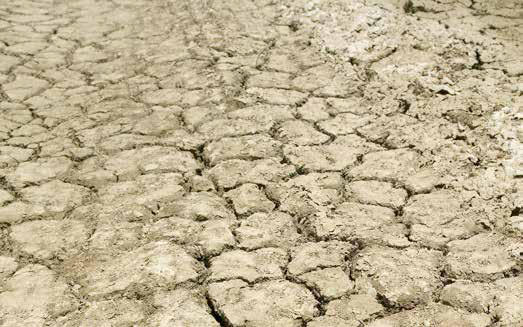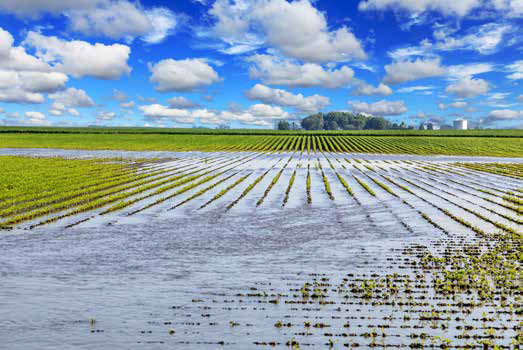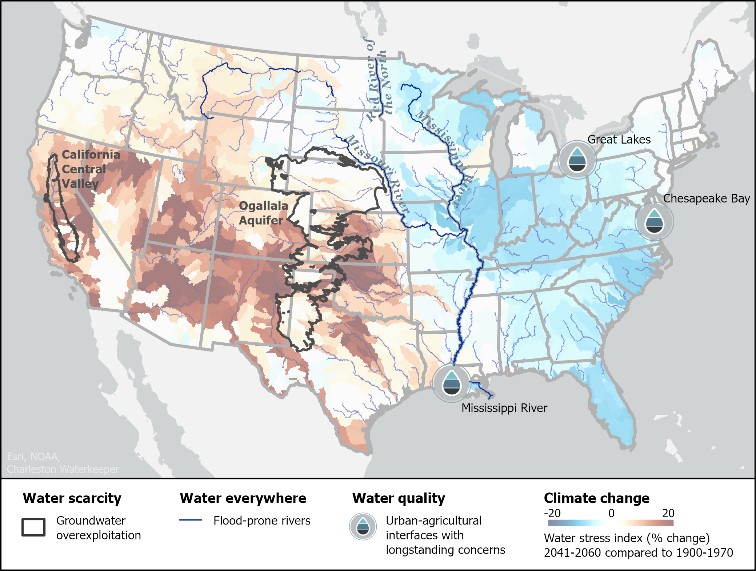The dual challenges of climate change and increasing global population are affecting the world’s water supply and resources. Climate change is altering precipitation patterns and increasing air and water temperatures globally which is disrupting agricultural production locally. These changes are causing more intense drought and heat waves, while heavier downpours and flooding occur more frequently. At the same time, growing populations are competing for water resources traditionally used by agriculture.
Furthermore, these challenges have complex consequences for water availability, quality, and distribution when combined with other biophysical and ecological stressors, changing economic conditions, and societal values and expectations. National, regional, and local solutions to these challenges must address the climate, soil management and characteristics, agricultural practices, food systems, agroenvironmental programs and policies, and the role of water in the local cultures, and economies.
USDA Research Network. Although these challenges have persisted over many decades, they will continue to evolve through 2050 and beyond. The complexities of water systems and their associated challenges require experts from many disciplines. Transdisciplinary and multidisciplinary teams learn from each other and work collaboratively to blend their diverse knowledge and experiences into new, path-breaking approaches, insights, and solutions. The USDA-ARS research network is uniquely positioned to bring scientists from many diverse disciplines together with producers and community members to discuss, to question, and to explore our Nation’s and the world’s most pressing water challenges.
Water Supply. All U.S. regions face water supply shortages that will only worsen with time as the climate changes and as populations and agricultural intensification grow. Integrity of storage reservoirs is threatened with dwindling inflows and increasing sedimentation, reducing the ability of these systems to mitigate drought effects. For example, continued development of irrigated agriculture in the drier High Plains and western regions exacerbates surface water availability and significantly draws down the midwestern Ogallala and California Central Valley Aquifers. In the East, despite a humid climate, patterns of rainfall and crops grown can sometimes require extensive irrigation. In other locations seasonal flooding results in excess soil moisture causing crop failures. Decades of irrigation have depleted the Mississippi River Valley Alluvial Aquifer, the second most productive aquifer in the United States.

|
|
Water Everywhere. Throughout the Midwest, Mid-South, and Northern Plains, excess precipitation and runoff in the spring leads to localized flooding and delays in fieldwork, resulting in yield losses. Extreme rainfall events in the Missouri and Mississippi River Basins contribute to flooding, causing extensive damage to infrastructure, agricultural production, personal property, and even the loss of life. Flooding occurs not only along the main rivers, but also along all major tributaries and in small streams. Reduced water storage capacity, due in some cases to sedimentation or changes in reservoir management policies or objectives, can increase the risk of flooding and lead to significant damages to crops, and major losses of very fertile topsoil. This challenge will require many professions and disciplines to develop innovative cropping and drainage water management systems and improved watershed models for flood forecasting.

Water Quality. From the Gulf of Mexico to the Chesapeake and San Francisco Bays to the Great Lakes and beyond, critically important water bodies are negatively affected by hypoxia (zones of low or no oxygen), harmful algal blooms, and habitat devastation which are typically caused by increases in sediment, nitrogen, and phosphorus in stormwater runoff and groundwater exfiltration. However, pesticides, metals, and pharmaceuticals are also emerging concerns and can lead to aquatic impairment, affect aquatic diversity, and render the water unusable for human consumption, fishing, and recreation. ARS leads the development of strategic solutions to minimize harmful algal blooms, but complex ecosystem-level events that deliver contaminants to sensitive water bodies are expected to occur more frequently, further complicating mitigation and management strategies.
Culture, Society, Economy, and the Urban and Agriculture Interface. The challenges outlined above will require USDA to continue engaging in transdisciplinary research. Land use changes, urban expansion into agricultural areas, and other complex social and cultural challenges necessitate creative approaches and solutions. Increased interest in urban community gardens, large vertical farming facilities, building retention ponds, and establishing artificial wetlands are a few novel opportunities needing creative water use and water quality solution.
|
 Challenges of Today and the Future
Challenges of Today and the Future


